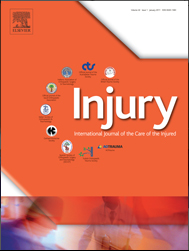
Trauma
Cement augmentation of PFNA for trochanteric fracture has no significant effect on early function
This report has been verified
by one or more authors of the
original publication.
Injury. 2018 Aug;49(8):1436-1444. doi: 10.1016/j.injury.2018.04.022
253 patients scheduled for intramedullary nailing of a trochanteric fracture with the Proximal Femoral Nail Antirotation helical blade implant (PFNA; DePuy) were randomized to either receive or not receive additional cement augmentation of the device. The primary outcome was the functional performance on the Timed Up and Go test, while secondary outcomes included mobility and activities of daily living, radiographic results, and the incidence of complications. TUG test times were significantly shorter in the cement group at 6 months, but not 3 and 12 months; additionally, change in TUG test time from baseline did not significantly differ between groups at any follow-up. No implant-related complications were recorded in either group.
Unlock the full article
Get unlimited access to OrthoEvidence with a free trial
Start TrialCritical appraisals of the latest, high-impact randomized controlled trials and systematic reviews in orthopaedics
Access to OrthoEvidence podcast content, including collaborations with the Journal of Bone and Joint Surgery, interviews with internationally recognized surgeons, and roundtable discussions on orthopaedic news and topics
Subscription to The Pulse, a twice-weekly evidence-based newsletter designed to help you make better clinical decisions
Exclusive access to original content articles, including in-house systematic reviews, and articles on health research methods and hot orthopaedic topics
Or continue reading this full article
Register Now

Subscribe to "The Pulse"
Evidence-Based Orthopaedics direct to your inbox.





































